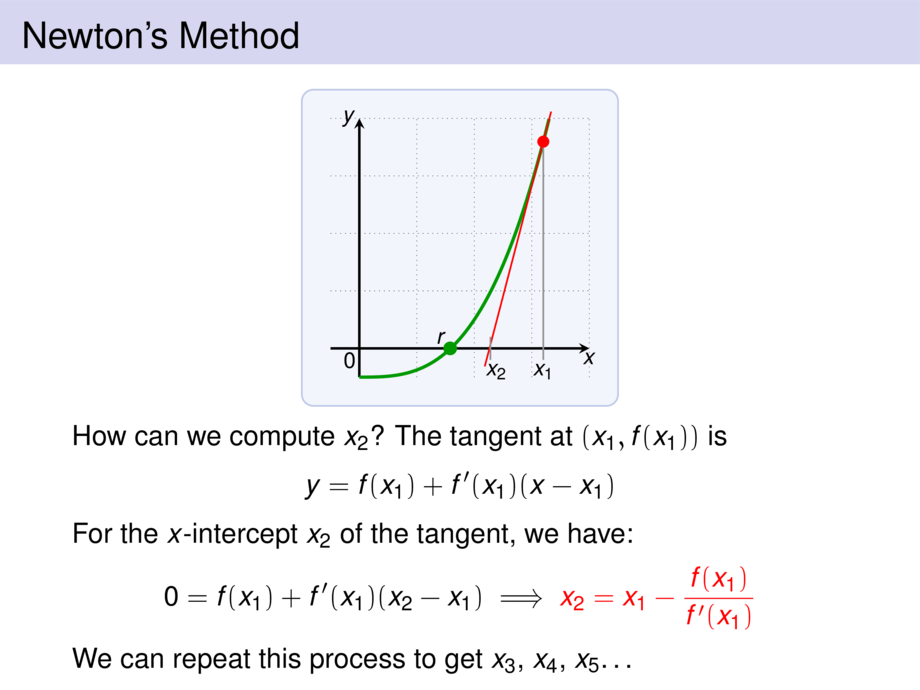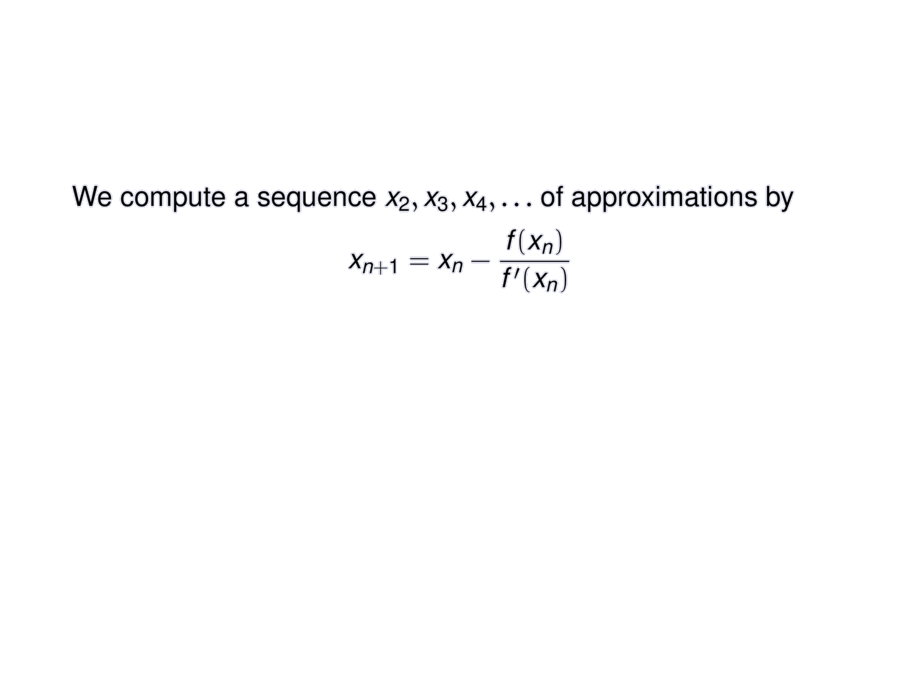



































































































27/50
\begin{frame}
\frametitle{Newton's Method}
\begin{block}{Newton's Method}
Let $f(x)$ be a function, and $x_1$ and approximation of a root $r$.
\pause\medskip
We compute a sequence $x_2,x_3,x_4,\ldots$ of approximations by
\begin{talign}
x_{n+1} = x_n - \frac{f(x_n)}{f'(x_n)}
\end{talign}
\pause
The hope is that $x_2,x_3,\ldots$ get closer and closer to the root $r$.
\\\pause
\onslide<18->{\alert{However, this does not always work.}}
\end{block}
\pause
\only<-17>{
\begin{exampleblock}{}
Let $x_1 = 2$. Find the 3rd approximation to the root of $x^2-1$.
\pause
\begin{talign}
f'(x) &= 2x\\[-.75ex]
\mpause[1]{x_2 &=}
\mpause{ x_1 - \frac{f(x_1)}{f'(x_1)} }
\mpause{= 2 - \frac{f(2)}{f'(2)} }
\mpause{= 2 - \frac{3}{4} }
\mpause{= \frac{5}{4} = 1.25 } \\[-.5ex]
\mpause{x_3 &=}
\mpause{ x_2 - \frac{f(x_2)}{f'(x_2)} }
\mpause{= \frac{5}{4} - \frac{f(\frac{5}{4})}{f'(\frac{5}{4})} }
\mpause{= \frac{5}{4} - \frac{\left(\frac{5}{4}\right)^2-1}{\frac{10}{4}} }
\mpause{= \frac{41}{40} = 1.025 }\\[-3.75ex]
\end{talign}
\pause\pause\pause\pause\pause\pause\pause\pause\pause\pause\pause
The sequence $x_1,x_2,x_3,\ldots$ gets closer and closer to the root $1$.
\end{exampleblock}
}
\only<18-25>{
\pause[18]
\begin{exampleblock}{}
Let $x_1 = 1$. Find the 2nd approximation to the root of $\sqrt[3]{x}$.
\pause
\begin{minipage}{.49\textwidth}
\begin{talign}
f'(x) &= \frac{1}{3\sqrt[3]{x^2}} \\
\mpause[1]{x_2 &=}
\mpause{1 - \frac{f(1)}{f'(1)} }
\mpause{= 1 - \frac{1}{\left(\frac{1}{3}\right)} }
\mpause{= -2 }
\end{talign}
\pause\pause\pause\pause\pause
\end{minipage}~%
\begin{minipage}{.49\textwidth}
\smallskip
\begin{center}
\scalebox{.8}{
\begin{tikzpicture}[default,baseline=1cm]
\def\diabordery{.25cm}
\def\diaborderx{.25cm}
\diagram{-3}{2}{-1.4}{1.3}{1}
\diagramannotatez
\begin{scope}[ultra thick]
\draw[cgreen,ultra thick] plot[smooth,domain=0:2,samples=200] function{x**(1/3.)};
\draw[cgreen,ultra thick] plot[smooth,domain=-3:0,samples=200] function{-(-x)**(1/3.)};
\node[include=cgreen] (r) at (0,0) {};
\node[anchor=south east] at (r) {$r$};
\end{scope}
\draw[gray] (1,-.2) -- node[at start,below,black] {$x_1$} node[include=cred,at end] {} (1,1);
\tangent{4.2cm}{1cm}{pow(\x,1/3)}{1}
\draw[gray] (-2,-.2) -- node[at end,above,black] {$x_2$} (-2,.2);
\end{tikzpicture}
}
\end{center}
\end{minipage}
\pause\vspace{.2ex}
Note that $x_2 = -2$ is further away from the root $0$ than $x_1 = 1$.
\end{exampleblock}
}
\only<26>{
\vspace{1.2cm}
\begin{exampleblock}{}
For more complicated examples see
\begin{itemize}
\item Chapter 4.8, Examples 1,2 and 3
\end{itemize}
\end{exampleblock}
}
\vspace{10cm}
\end{frame}

